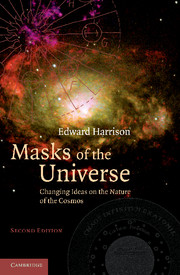Book contents
4 - The Geometric Universe
Published online by Cambridge University Press: 27 October 2009
Summary
Four thousand years ago the Babylonian sky-watchers charted the heavens, divided the sky into constellations of the zodiac, compiled star catalogs, recorded the movements of planets, prepared calendars, and predicted eclipses. Although skilled in the arts of computation, the Babylonians did not theorize on the laws of celestial motion for they were not scientists but priests paying homage to the sky gods of the mythic universe.
Between the seventh and sixth centuries B.C. intellectual activity quickened in many lands. The teachings of Zoroaster in Persia, Gautama the Buddha and Mahavira the Jain in India, and Confucius and Lao-tzu in China gave birth to ethical doctrines and inspired religions of virtuous living. Meanwhile in the Hellenic world an intellectual movement of a different stamp had begun that would also lead to eventful consequences.
The Greek civilization of scattered cities and colonies formed a mosaic of cultures that nurtured an elasticity of mind. Hellenic philosopher–scientists of the sixth century B.C. developed a style of thought radically different from the mystery-mongering of the Babylonian and Egyptian astrologer–priests. The Greeks awoke the dead matter of the mythic universe. They disentangled the sequences of cause and effect in a world of natural happenings. They looked askance at the sacred myths, developed the rudiments of the scientific method, and to this day science inherits their curiosity and incredulity.
It began with the Ionians, descendants of the Mycenaeans, who inherited the Minoan culture of Crete.
- Type
- Chapter
- Information
- Masks of the UniverseChanging Ideas on the Nature of the Cosmos, pp. 45 - 60Publisher: Cambridge University PressPrint publication year: 2003

